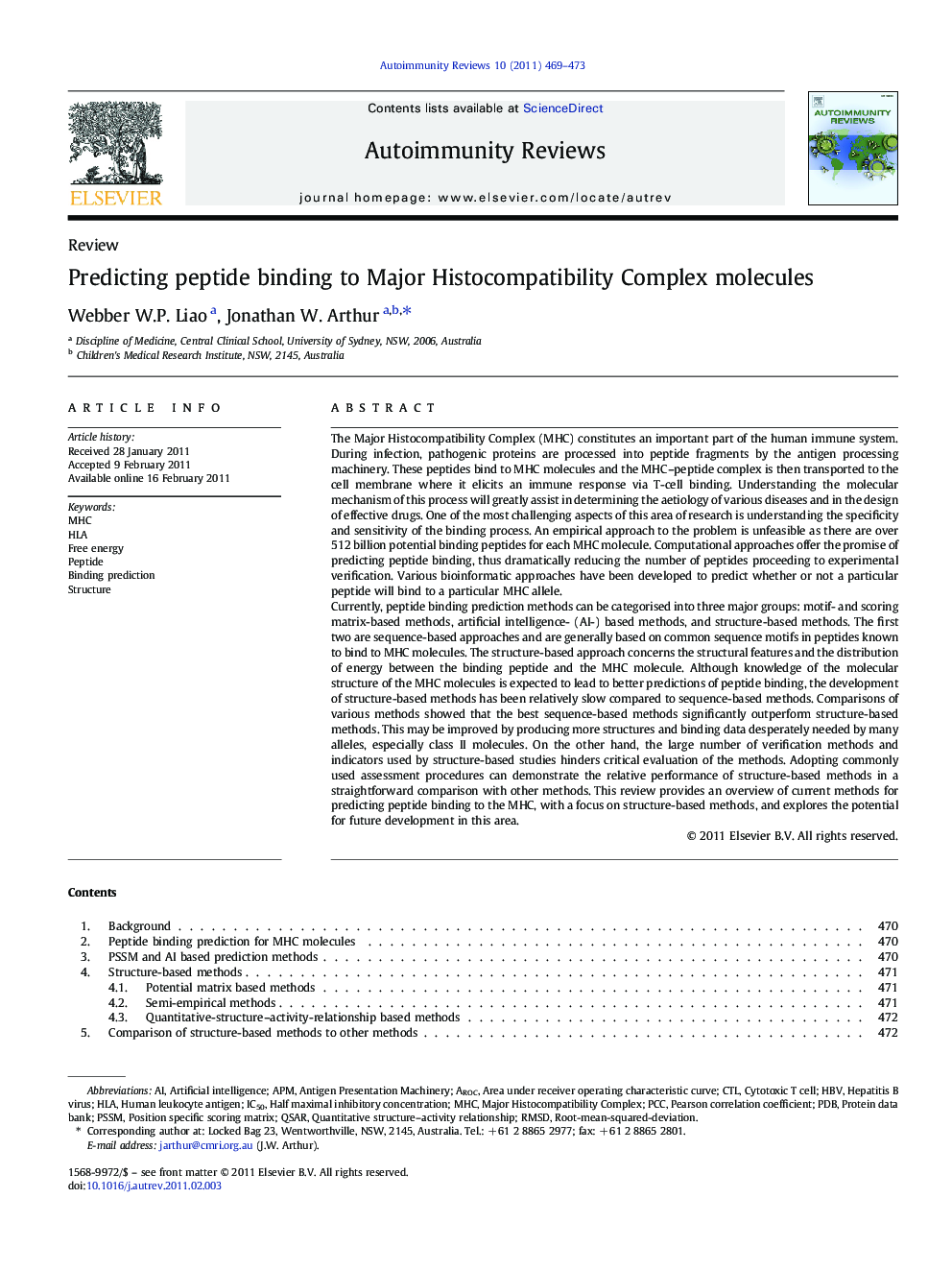| کد مقاله | کد نشریه | سال انتشار | مقاله انگلیسی | نسخه تمام متن |
|---|---|---|---|---|
| 3341994 | 1214257 | 2011 | 5 صفحه PDF | دانلود رایگان |

The Major Histocompatibility Complex (MHC) constitutes an important part of the human immune system. During infection, pathogenic proteins are processed into peptide fragments by the antigen processing machinery. These peptides bind to MHC molecules and the MHC–peptide complex is then transported to the cell membrane where it elicits an immune response via T-cell binding. Understanding the molecular mechanism of this process will greatly assist in determining the aetiology of various diseases and in the design of effective drugs. One of the most challenging aspects of this area of research is understanding the specificity and sensitivity of the binding process. An empirical approach to the problem is unfeasible as there are over 512 billion potential binding peptides for each MHC molecule. Computational approaches offer the promise of predicting peptide binding, thus dramatically reducing the number of peptides proceeding to experimental verification. Various bioinformatic approaches have been developed to predict whether or not a particular peptide will bind to a particular MHC allele.Currently, peptide binding prediction methods can be categorised into three major groups: motif- and scoring matrix-based methods, artificial intelligence- (AI-) based methods, and structure-based methods. The first two are sequence-based approaches and are generally based on common sequence motifs in peptides known to bind to MHC molecules. The structure-based approach concerns the structural features and the distribution of energy between the binding peptide and the MHC molecule. Although knowledge of the molecular structure of the MHC molecules is expected to lead to better predictions of peptide binding, the development of structure-based methods has been relatively slow compared to sequence-based methods. Comparisons of various methods showed that the best sequence-based methods significantly outperform structure-based methods. This may be improved by producing more structures and binding data desperately needed by many alleles, especially class II molecules. On the other hand, the large number of verification methods and indicators used by structure-based studies hinders critical evaluation of the methods. Adopting commonly used assessment procedures can demonstrate the relative performance of structure-based methods in a straightforward comparison with other methods. This review provides an overview of current methods for predicting peptide binding to the MHC, with a focus on structure-based methods, and explores the potential for future development in this area.
Research highlights
► Studying peptide binding empirically is unfeasible with over 512 billion candidates.
► Development of structure-based methods has been slow compared to other methods.
► Structural methods perform well, but are outperformed by the best of other methods.
► More structures and binding data may improve the accuracy of structural methods.
► Adopting commonly used assessment measures helps critical evaluations of structural method.
Journal: Autoimmunity Reviews - Volume 10, Issue 8, June 2011, Pages 469–473